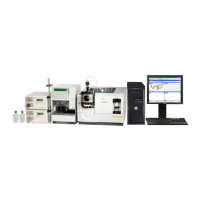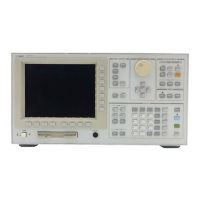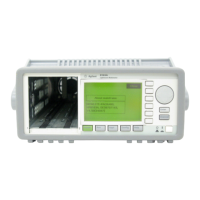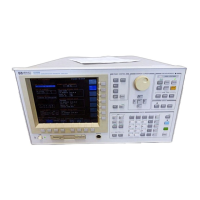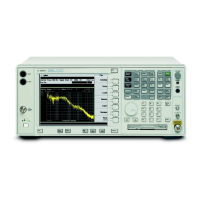Syntax Descriptions
Syntax descriptions in the command reference chapters use the following elements:
<BLOCK>
This item designates block data. There are three kinds of block data; binary-definite-length-block data,
binary-indefinite-length-block data, and ASCII data. The analyzer always returns binary definite-length-block
data or ASCII data in response to queries.
When you send block data to the analyzer, you can send it either as definite-length block or indefinite-length
block data or as ASCII data.
If you are sending binary data using indefinite-length syntax, <BLOCK> takes the following form:
<BLOCK> ::= #0<data_byte>[,<data_byte>] . . .<NL><^END>
<data_byte> ::= unsigned 8-bit data
<NL> ::= new line (line feed) character, ASCII decimal 10
<^END> ::= GPIB END message (EOI set true)
If you are sending binary data using definite-length syntax, <BLOCK> takes the following form:
<BLOCK> ::= #<byte><length_bytes><data_byte>[<data_byte>]...
<byte> ::= number of length bytes to follow (ASCII encoded)
<length_bytes> ::= number of data bytes to follow (ASCII encoded)
<data_byte> ::= unsigned 8-bit data
If you are sending ASCII data, <BLOCK> takes the following form:
<BLOCK> ::= integer[,integer]. . . <NL>
or
<BLOCK> ::= floating-point-numeric[,floating-point-numeric]. . . <NL>
See “GPIB Message Syntax” in the
GPIB Programmer’s Guide
for more
information about block data.
<CHAR>
This item designates a string of ASCII characters. There are no delimiters. Usually, the string is from an
explicit set of responses. Maximum length is 12 characters.
<CMDSTR>
This string specifies the type of measurement data. Channels 3 and 4 are only available with Option AY6.
D[1|2| . . |8] selects a data register
TCAPture [1|2|3|4] selects a time capture buffer
W[1|2|. . .|8] selects a waterfall register
XFRequency:POWer [1|2|3|4] selects power spectrum
XFRequency:POWer:COHerence [1,2|1,3|1,4|3,4] selects coherence
XFRequency:POWer:CROSs [1,2|1,3|1,4|3,4] selects cross spectrum
Command Syntax in the Agilent 35670A
2-7
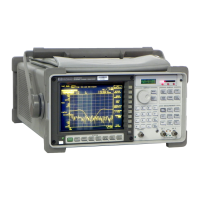
